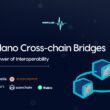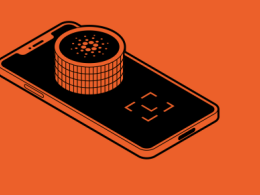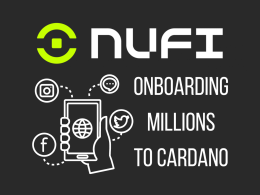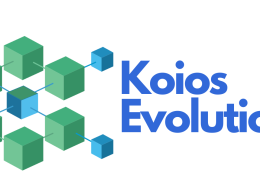Disclaimer: This article should not be considered as expert advice or an endorsement of the project. The article was written based on information provided by the project team during an interview, the proposal itself, and additional research conducted online. While every effort has been made to ensure accuracy, personal biases may have influenced the writing. Therefore, voters are strongly encouraged to conduct their own thorough research and due diligence on the proposals they intend to vote on. This article should be used as a starting point for further investigation and not as the sole basis for making a voting decision.
A Quick Rundown of The Proposal
Project Description:
The primary goal of this proposal is to provide free of cost risk ratings for every fungible asset on Cardano.
The project is being built by Xerberus Labs Ltd, a company based in the United Kingdom.
Link to Ideascale proposal: https://cardano.ideascale.com/c/idea/102532
The white paper for the project is available at this link.
Proof of Reputation
- The team has already built a working proof of concept, which is available for the public to test.
- The skills and qualifications of the team members align well with the product they aim to build.
- This is the first-ever Catalyst proposal submitted by the Xerberus team. So, they have no previous record of participating in Catalyst.
What is the amount requested by the project?
The proposal requests $100,000 USD (400,000 ADA), which constitutes 4.40% of the total fund in the specified category (i.e., 9,080,400 ADA).
What problem is this project solving?
This proposal aims to build a solution that addresses the risk associated with bad actors in the crypto space by providing quantitative risk metrics for all fungible assets on Cardano, thereby aiding informed investment decisions and minimizing losses due to scams or poor projects
Impact
This project clearly demonstrates and explains the positive impact it will have on the Cardano ecosystem. Its impact will be measured and validated using key performance indicators.
Feasibility
The feasibility of this project is clear. The team’s experience, understanding of potential risks, and technical capabilities suggest a high likelihood of successful execution.
Value For Money
With a working proof of concept already in place, this project demonstrates excellent value for money. All financial aspects are clearly defined and explained
Now, Let’s Dive into the Details
What problem is this project solving?
The project aims to address a prevalent issue in the Cardano and wider crypto ecosystem: a significant lack of impartial, fact-based information about token risks. This gap leaves the community vulnerable to exploitation and misinformation spread by influencers.
The project is particularly designed to address the risks inherent in decentralized blockchain networks due to bad actors and fraudulent activities.
Is this a significant problem in Blockchain space?
Yes, for example “pump and dump” schemes are a problem in the blockchain and cryptocurrency ecosystems. A token’s price can be artificially inflated through a coordinated effort only for those behind the scheme to sell off their tokens once the price is high, leading to a crash in the token’s value.
Such issues pose significant risks to investors and can undermine trust in the blockchain and cryptocurrency ecosystems.
What is the solution offered by the project to solve the above mentioned problem?
This project aims to build two critical services to solve this problem:
- The project’s solution involves creating Risk Ratings for all fungible assets on Cardano. These ratings are based on objective facts such as transaction patterns associated with a particular asset. This risk ranking system that categorizes assets from AAA to D, where D indicates a high probability that the token will default to a price of zero.
- An alert system that warns users when the risk profile of a token changes, providing them with a window of opportunity to protect their investments or spot promising opportunities early on.
The risk scores and their changes are triggered by the transaction patterns connected to the tokens on the blockchain. The system scans all transactions of a token to capture the underlying pattern, recording, for instance, the type of wallets holding the token and other activities they engage in.
How accessible will be the solution to users
The risk ranking will be freely available to everyone, and a free API will be provided for other builders and power users so they can integrate the scores into their products.
What is the methodology used by this project to create the solution?
The project’s approach is based on analyzing all available transactions because they are objective facts that contain relevant information. The system uses sophisticated mathematical models to extract this information.
Topology-based data analysis is a branch of mathematics that studies the properties of spaces that are preserved under continuous transformations. In the context of this project, it refers to the use of mathematical models to analyze and interpret the complex, multi-dimensional data derived from the transactions on the blockchain.
The project uses this approach to analyze all available transactions, viewing them as objective facts that contain relevant information about the risk associated with each token. By examining the ‘shape’ of the data — the patterns and structures formed by these transactions — the system can identify potential risks and classify tokens accordingly.
This method allows for a more nuanced understanding of the data, as it can reveal insights that simpler, linear models might miss. For example, it can help identify clusters of similar transactions, detect outliers that might indicate fraudulent activity, or reveal trends over time.
Is it practical and doable?
Yes, this methodology is already being used in different fields to assess risk.
Here are some specific examples of Topology-based data analysis being used in different fields to assess risk:
1. A topology-based evaluation of resilience on urban road networks against epidemic spread: Implications for COVID-19 responses: This research uses the risk of infectious disease spreading based on a topological road network to evaluate resilience against epidemic spread.
2. Use of graph theoretic parameters in risk assessment of chemicals: This paper discusses the use of topological parameters in predicting mutagenicity of a diverse set of 520 chemicals.
3. HELOC Applicant Risk Performance Evaluation by Topological Hierarchical Decomposition: This paper proposes a method for evaluating the risk performance of Home Equity Line of Credit (HELOC) applicants using topological hierarchical decomposition.
4. Topological Analysis of Credit Data: Preliminary Findings: This research applies topological data analysis to the prediction of credit risk, developing a pipeline based on topological features.
Here are some specific examples of working products that are based on Topology-based data analysis:
1. Klarna: Klarna, a leading global retail bank, payments, and shopping service, uses topological data analysis in e-commerce for product search. It helps in understanding complex user needs and large product assortments.
2. Logiq.ai: Logiq.ai offers a topology-based observability data fabric, a new paradigm in the cloud technology space. It unifies several aspects of data analysis, including metrics, logs, and traces, into a single, coherent, and context-rich view.
3. HiDeF: HiDeF is a persistent homology (PH)-based method for studying the structure of biological data at multiple scales simultaneously. It has been used in biomedicine to identify known as well as more complex structures in biological data.
Team Composition and Expertise
The Xerberus team comprises four key members:
Simon Peters, the Director, has prior experience as the CEO of DECUS Network, where he secured significant venture funding and developed a custody infrastructure for institutional players. LinkedIn Profile
Noah Detwiler, the Chief Scientist, is an econophysicist proficient in SQL and Python. He specializes in applying mathematical models and statistical analysis to complex economic systems. LinkedIn Profile
Matthias Guilbert, the primary front-end developer, has a background in military service and software development. He is proficient in the MERN stack. LinkedIn Profile
Mihir, the back-end developer, has been coding from a young age and provides crucial development support. Github Profile
Additionally, Xerberus is supported by an advisory board with extensive knowledge of financial market operations
Budget Breakdown
The projected budget for the upcoming 12-month period totals approximately $250,000 USD. The allocation for this budget involves a combination of private and public funding: $150,000 from private investors and an expected $100,000 from Project Catalyst in the form of 400,000 ADA.
The vast majority of this funding, 84% ($212,100), will be designated for Research and Development, with the remaining 16% ($34,800) being used for General Administration.
The Project Catalyst funds ($100,000) will specifically be used to aid the Research and Development expenses:
- $138,000 will go towards the salaries of three full-time R&D employees.
- $72,000 will be spent on the computational resources needed to run risk models.
- The remaining $2,100 will cover miscellaneous costs like tool subscriptions.
In the event of a significant decrease in the value of ADA, the team plans to expand its equity fundraising efforts. The contingency plan includes an extension of the UK Seed Investment Program, which may cover up to $250,000 but comes with a trade-off of lost equity.
Impact Assessment:
Target Audience: The primary beneficiaries of this project will be the Cardano community, particularly those holding and interested in purchasing Cardano native tokens.
Measurable Outcomes:
The project is expected to have an impact after completion by enhancing user safety within the Cardano ecosystem and amplifying capital investment in high-quality projects.
The expected outcomes include a reduction in user funds lost to high-risk assets across the Cardano ecosystem.
How will it be measured?
The measurement will be based on a key performance indicator (KPI) known as “Accumulated Rugged ADA.”
Other KPIs include the number of unique monthly users, the frequency of opened email alerts, the “Error Alert” metric (ratio of false alerts to total alerts issued), and the “Alert Missed” metric (ratio of issued alerts to the number of events that should have triggered an alert upon review).
Is this method viable?
Yes, despite the challenges in quantifying the effects on the ecosystem, they can be statistically substantiated.
But some impacts, such as long-term effects and subjective factors like increased user confidence or improved reputation of the Cardano ecosystem, might be difficult to measure in the short term or hard to quantify.
Sustainability:
Is the project currently sustainable?
Yes, the project is currently sustainable as the team is funding it themselves.
Business Model and Monetization Plans for Future Sustainability:
To make the project profitable and sustainable, the team plans to build secondary paid services on top of the free risk rating service provided by the platform.
Risk and Contingency Planning:
Every project faces potential risks and challenges.
Here’s how these are addressed in this project:
Risk Identification:
What are the possible risks or challenges that might impede the project?
1. Subjectivity of the Process: The process of generating a final risk rating involves condensing approximately 50 data points into four or five individual scores. This process inherently involves some subjectivity, particularly in the weighting of different data points. However, according to team members, they are committed to minimizing this bias. They plan to achieve this by clearly explaining their methodology, continuously backtesting, and updating their models for accuracy. Importantly, they also plan to revise the weighting of data points over time, refining the process based on new insights and data. This ongoing refinement aims to enhance the objectivity of the risk rating over time.
2. Scalability of the Process: The risk rating process is scalable because it is largely automated and based on mathematical models that can handle large amounts of data. It uses transaction data from the blockchain, which can be automatically collected and processed. The process of reducing data points into individual scores and then into a final risk rating can be done for any number of assets without significant increases in manual effort. As more assets are added to the Cardano blockchain, the system can continue to provide risk ratings for them. Furthermore, as the system continues to learn and improve over time, its ability to accurately rate risk can increase, making it even more useful as the scale of the ecosystem grows.
3. Will the Project be Open-Sourced?
Yes, the project will be open-sourced.
4.What is the risk of being dependent on Topology-based data analysis?
If entirely new patterns of transactions or behaviors emerge that the model has not been trained on, the topology-based data analysis may struggle to accurately predict the associated risks.
For example, a new type of scam or fraudulent activity might emerge in the cryptocurrency space that doesn’t match any of the patterns the model has been trained on. In such cases, the model might not recognize this new pattern as a risk, potentially leading to inaccurate risk assessments.
However, the model is dynamic and evolving. When new patterns emerge, the model can be revised based on the new data, making it a continually improving tool for assessing risk in the Cardano ecosystem
4. Are there contingency plans if they are not funded by Catalyst?
According to the team, a lack of funding from Catalyst will not stop them, but it could slow them down. They are committed to building this project as they believe in its vision. This commitment is evidenced by the fact that they have developed a working product, which is openly accessible, before asking for community funds.
5.Other Risks?
The Xerberus team depends on external investors who invest through the Seed Enterprise Investment Scheme (SEIS) of the UK government. There is a certain risk of not getting funded through this program, but the team is willing to self-fund to finish the project.
Conclusion
In conclusion, this proposal aims to build a vital tool for the Cardano community – a risk rating system for Cardano native assets. The team behind this project has already demonstrated their commitment and capability by developing a working proof of concept, which is open for community testing. The skills and qualifications of the team align well with the product they aim to build, and their motivation is evident in their belief in the product’s vision. They have proven their dedication by building the proof of concept before seeking community funding.
However, like any project, there are risks. The models, based on historical data, may only be able to predict patterns that have occurred in the past. As the cryptocurrency field is still in its early stages, new patterns could emerge that the current model may not predict. This means there could be certain risks that the mathematical model cannot foresee.
However, the proposed model is dynamic and evolving. When new patterns emerge, the model can be revised based on the new data, making it a continually improving tool for assessing risk in the Cardano ecosystem.










